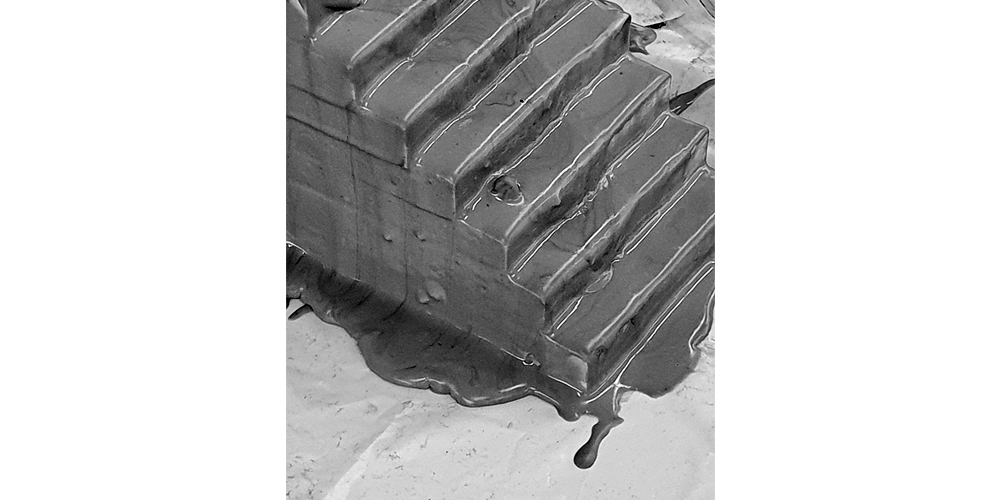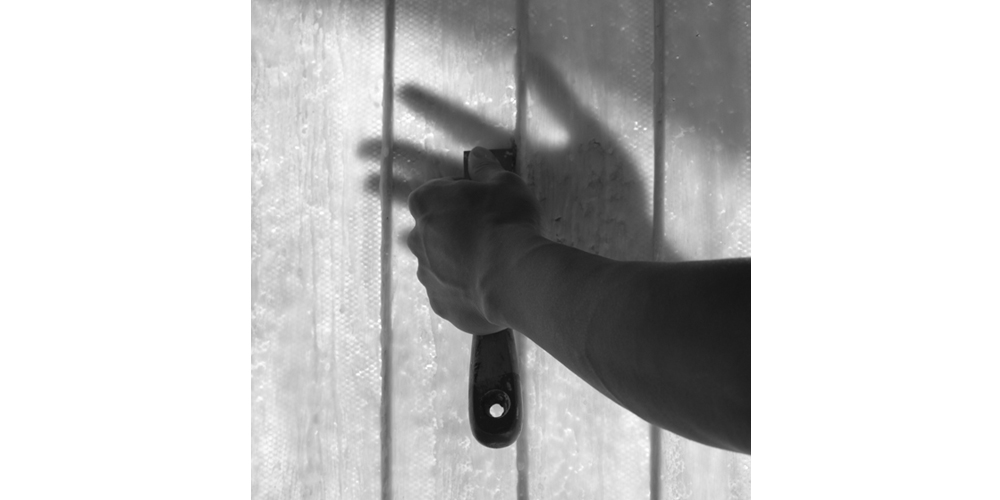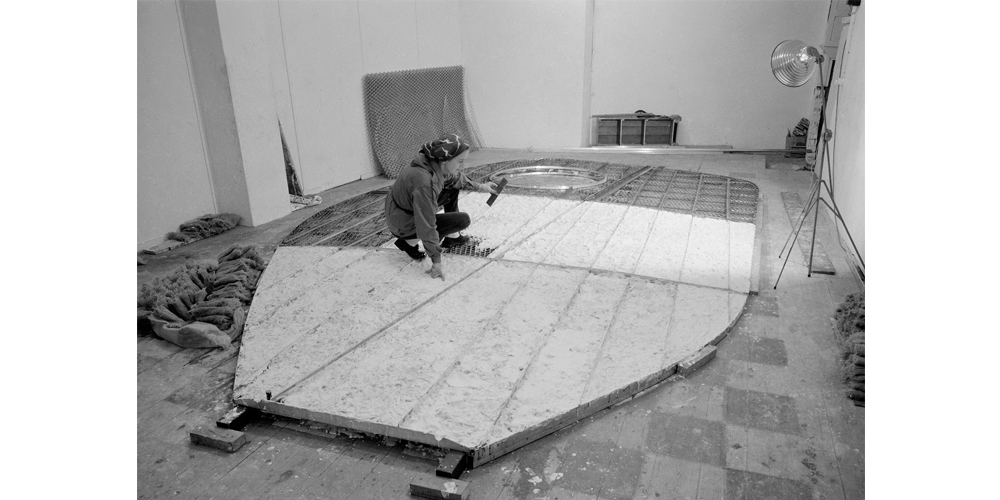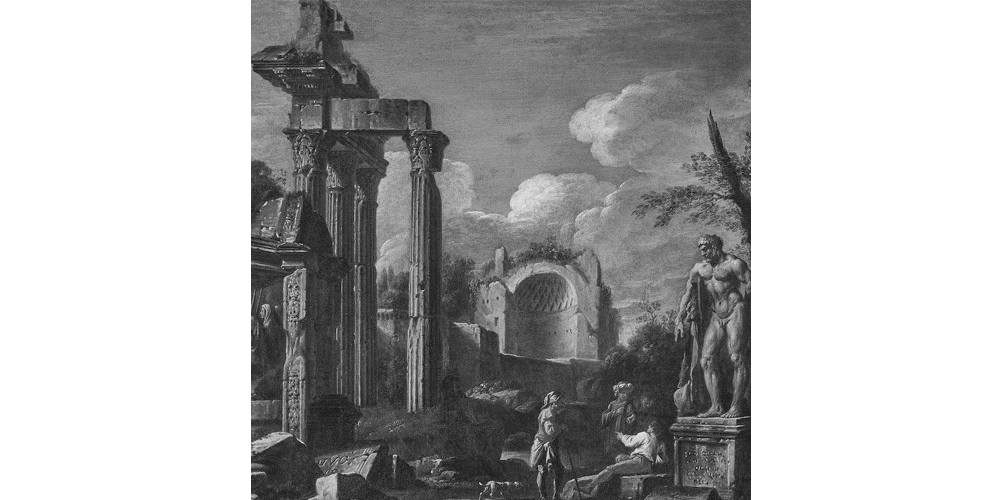






Swiss Art Awards
Basel, Switzerland2021
All the elements are fluids. Even stone is a fluid: a
mountain wears away and becomes sand. It is simply a matter of time. It is the
brevity of our own existence that leads us to call a material “hard” or “soft”.
Deep time makes nonsense of these criteria. - Nicolás Lamas, The Attraction of the Mountains, 2017
![]()
First investigation
How do we deal with designing an ephemeral structure, short-lived and
only on display
for a few days? Troubled by the perversity to build a structure subject to
destruction, we find inspiration in the writing of Lamas. Architecture is often
- and wrongly - associated with the permanent and the everlasting. Yet
everything is finite, architecture as well. Everything is always in transition
to something else, even when we cannot always perceive those changes and
movements. The materials we use have a life before and after the short duration
of the exhibition. This acceptance of our installation as a part of an infinite
material flow forms the central idea of our proposal.
![]()
Applying the first layers of wax
Our installation is made from sugarcane wax, a dark-brown substance, and
a waste material of the production of sugar. Sugarcane wax is obtained from
pressing the stalks of the sugar cane plant, which are the remaining filter
residues from the sugar production process. Being a natural wax from renewable
raw materials, sugarcane wax is fully biodegradable and forms a great
alternative to previously used fossil wax products.
With its relatively low melting point, wax has a great transitional
quality. Only a small amount of energy is required to shift between solid and
liquid. This process can be endlessly repeated, giving wax an infinite
recycling potential. On the other hand, the melting point of sugarcane wax is
high enough to remain stable even if exposed to direct sunlight.
![]()
Barbara Hepworth working on the armature of
Single Form in the Palais de Danse.
Single Form in the Palais de Danse.
The sugarcane wax is melted, smoothed into a batter-like substance, and
brushed onto a lightweight metal armature tracing the shape of an isolated
apse. The melting, pouring, scraping, and smoothing allows us to directly work
and re-work the wax surface. The dripping and the unpredictable flow of the
poured wax defines the final expression of the installation. By inviting
experimentation, chance, and formal intuition in the process of making, we
allow the material itself to dictate the final form and, in turn, examine the
traditional notion of making, here the design precedes the making.
![]() Ghisolfi, Giovanni, attributed. Roman ruins, landscape.
Ghisolfi, Giovanni, attributed. Roman ruins, landscape.
In the Background is the apse of Maxentius Basilica.
The installation takes the form of an isolated apse loosely placed in
the main aisle of the exhibition hall. The apse plays a two folded spatial
role. On one hand, the arched interior creates a symbolic centre and instigates
a sense of isolation from the business of the fair. The glossy surface of the
wax, its scent and its dark colour will charge the vaulted space with a
tangible energy. On the other hand, the apse always formed a precise part of a
larger whole, marking the symbolic end of a central aisle or belonging to a
sequence along the ambulatory. Now, presented as a ruin-like fragment and
isolated from the whole, the arch stands in direct and open relation to the
exhibition hall. These concurrences of inwardness and openness, of motion and
stillness, and of the permanent and the ephemeral form the main themes of the
installation.
![]()
Applying the first layers of wax
As we wrote: everything is finite, architecture as well - our
installation definitely. The ruin-like presence of the installation suggests a
sense of permanence and stands in contrast with the ephemeral nature of the
installation. The wax is presented to the viewer in a momentary and transitory
shape, awaiting different future uses and applications. At the end of the
exhibition, the wax will be scraped off, melted, shipped back to the supplier,
and reclaim its position in the infinite material flow
In the Background is the apse of Maxentius Basilica.
Location: Basel, Switzerland
Year: 2021
Type: Production
Client: Swiss Art Awards
Copyright: Guadalupe Ruiz and BAK, Swiss Art Awards 2021
Year: 2021
Type: Production
Client: Swiss Art Awards
Copyright: Guadalupe Ruiz and BAK, Swiss Art Awards 2021





